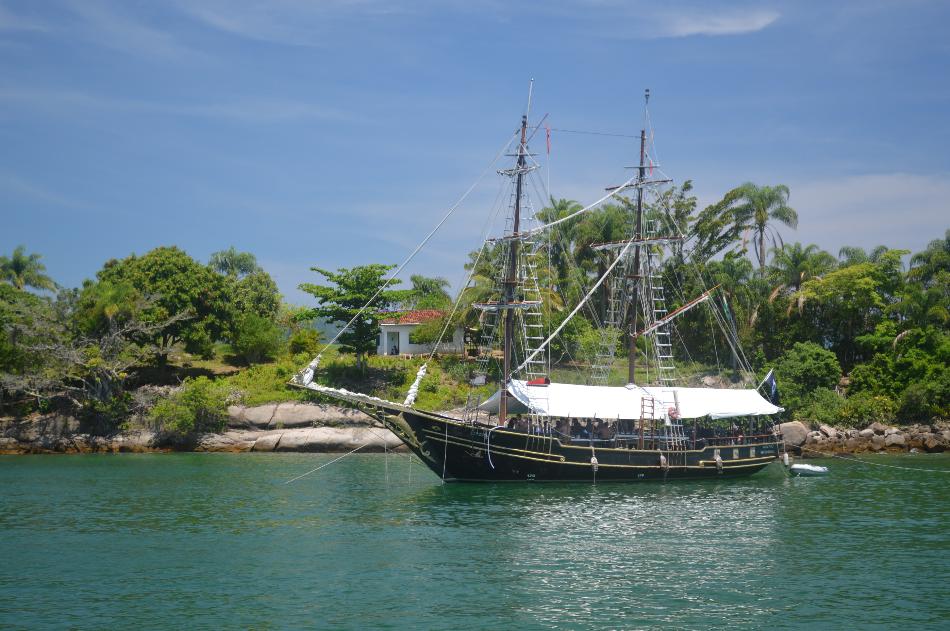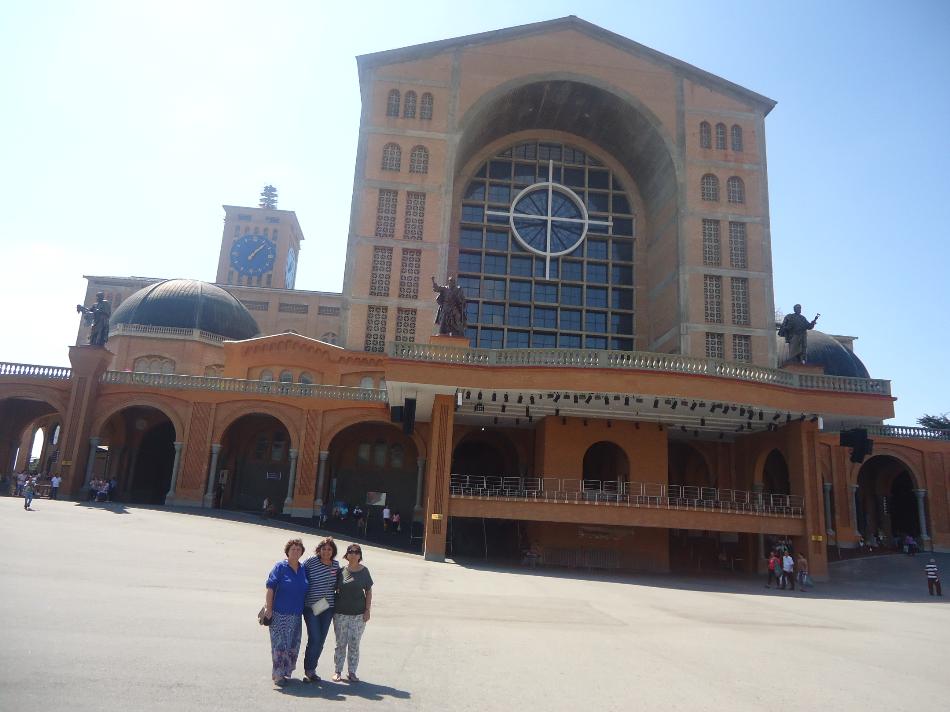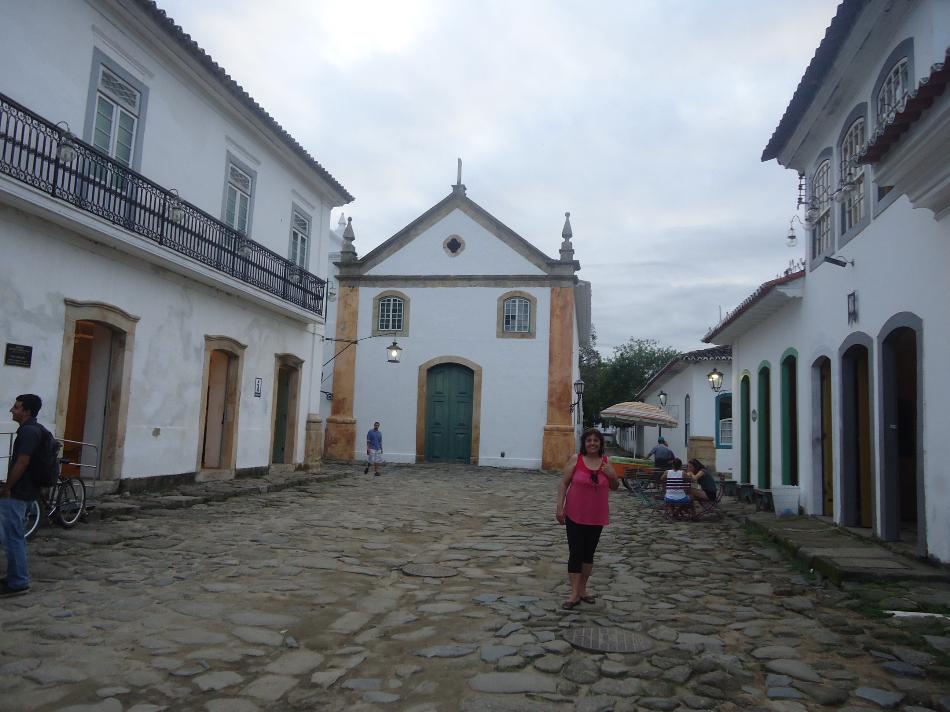

This year Filomena travelled with me to Brazil and spent the first week of the holidays with my parents in Pontal do Sul. Then she flew to São Paulo where she met her sister that had arrived the day before from Portugal to spend holidays with her and the cousins that live in São Paulo and Guarujá.
The four of them went on a 5 days excursion and visited Paraty and Basilica da Aparecida and these photos will give an idea of the places they visited.
Paraty is a Portuguese colonial (1500–1822) and Brazilian Imperial (1822–1889) municipality, well preserved and with a population of about 36,000. The town is located on the Bay of Ilha Grande, which is dotted with many tropical islands. Rising up as high as 1,300 meters behind the town are tropical forests, mountains, and waterfalls. It is the south westernmost city in Rio de Janeiro state.
Paraty was founded by the Portuguese in 1667, in a region populated by the Guaianás Indians. In the Tupi language “Paraty” means “river of fish”. Even today the Brazilian Mullet (Mugilbrasiliensis) still comes back to spawn in the rivers running into the Bay of Paraty.
After the discovery in the mountains of Minas Gerais of the world's richest gold mines in 1696, Paraty became an important port exporting gold to Portugal via Rio de Janeiro. The ensuing gold rush led to the construction of the "Caminho do Ouro" or "Gold Trail", a 1200 km road, paved in steep areas with large stones, connecting Paraty to Diamantina via Ouro Preto and Tiradentes.
The Gold Trail fell into disuse because of attacks on the gold laden ships bound for Rio de Janeiro by pirates who frequented the islands and coves of the Bay of Angra dos Reis. Forte Defensor was built in 1703 and outfitted with six cannons for the protection of the city’s important commercial warehouses
On way from Paraty to Itatiba where Clara has her Chitaca das Orquidias they visited the Basilica da Aparecida. The legend tells that the people of Guaratinguetá decided to hold a feast in honour of D. Pedro de Almeida, Count of Assumar. Three fishermen, Domingos Garcia, João Alves, and Filipe Pedroso went down to the Paraíba waters to fish.
The fishermen prayed to Our Lady of the Immaculate Conception that God would grant a good catch. The fishermen, having a run of bad luck, cast their nets in the River Paraiba and dragged up a headless statue of the Virgin Mary.
They also salvaged the head and, according to the legend, then netted plenty of fish. After cleaning the statue, they found that it was a black version of Our Lady of the Immaculate Conception. Devotion to the statue grew rapidly, particularly among Afro-Brazilians, not only for its black Madonna status, but also because it was reported to have performed a miracle for an enslaved young man. The basilica da Aparecida was built to honour t he saint.
On July 4, 1980, while still under construction, the new church was consecrated by Pope John Paul II and given the title of Minor Basilica. It is currently the largest Marian temple and the second largest Basilica in the world, second only to St. Peter's in the Vatican City.

Ilha Comprida

Basilica da Aparecida

Paraty